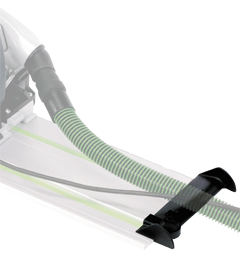shed9
Member
- Joined
- Mar 22, 2014
- Messages
- 497
I wouldn't discount the shorter rails either. I got the 31" with an OF1010 package and I'm surprised how much this is used along with all the other sizes.
The only advice I can reiterate and offer myself into this thread is;
1.) If you get any rails which have same sizes in the LR32 and non-LR32 options, clearly get the LR32 version.
2.) Get yourself the rail deflector, part number 489022. It will make it easier using the hoses as they catch on the edge and it will prevent damage;

3.) Don't get the combination bevel, part number 491588. I got this as part of a TS55 package, never used it myself and can't see me using it;

The only advice I can reiterate and offer myself into this thread is;
1.) If you get any rails which have same sizes in the LR32 and non-LR32 options, clearly get the LR32 version.
2.) Get yourself the rail deflector, part number 489022. It will make it easier using the hoses as they catch on the edge and it will prevent damage;

3.) Don't get the combination bevel, part number 491588. I got this as part of a TS55 package, never used it myself and can't see me using it;

